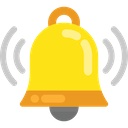Hi,
I suppose there's a reason they call them "tappets". /ubbthreads/images/graemlins/smirk.gif
The TR 4-cylinder valve train was always a bit noisy, especially at cold start before things heat up and clearances close up a little.
It's hard to judge without actually listening to your car, and you say that there's nothing wrong with the engine. However, maybe it's just time for a freshening up of the head and/or valve train.
Since it's easy to get to and parts aren't overly expensive, I'd start by looking at the rocker assembly and possibly rebuilding that. If you do rebuild it, the hardened rocker shaft is a good investment, if you can find one.
If you remove the rocker shaft and arms for inspection/rebuild, look closely at the faces of the rockers, where they wipe the valve. If worn, these might need refacing, which is a relatively precise job for a machine shop. The reason this makes for more noise is that, when worn, it can be next to impossible to adjust accurately. A groove in the middle of the face is bridged by the feeler gauge and you actually end up with a lot more gap than you realize.
The rocker assembly is easy to remove. Just be careful not to lift any of the pushrods with it. Often when they are lifted, residual oil in the cam followers will cause a suction and those will lift too, and they can be real buggers to get back into their bores without removing the head. The pushrods need to be kept in their original locations, anyway.
In the head, it's possible the valve guides in the head are contributing to the excessive noise. If they have never been replaced with the type for unleaded fuel, there might be a lot of wear and that might make for some more noise. Tired old valve springs might add some, too. I suppose a severe case of valve seat recession, also because of unleaded fuel, might make for some additional noise, too, since it would throw off rocker geometry.
However, I gotta note that the new valve guides made for unleaded fuel should be run loose, honed over the orignal factory specifications by about +.0015 on the intakes and +.0025 on the exhaust. This will make things a little noisier than original, but may be better than what you are hearing now. The extra clearance is needed because the modern materials expand more when hot, and that can cause a valve to sieze, which in turn can tear up other parts of the motor.
And, has the head ever been milled? If so, the length of the pushrods should have been modified to match. If too long or too short, the geometry of the rockers will be off and that will make for lots of rattle.
Probably the ultimate would be to convert to roller rockers, which should make for less wear and tear, as well as run quieter. About the best price I've found on them is Ted Schumacher's at
www.tsimportedautomotive.com
Other suggestions are good. Common solutions are sound deadening material on the hood/firewall and cast aluminum valve covers.
I especially like the idea of fitting headers and a free flow exhaust... that, and maybe a set of Webers sucking in lots of air and fuel would drown out the valve noise! /ubbthreads/images/graemlins/laugh.gif However, with those mods, the motor would probably also get a high performance cam fitted, which usually needs a lot *more* clearance, maybe .018" on the exhaust side. /ubbthreads/images/graemlins/tongue.gif
It might also be possible to paint the outside of the stock valve cover with sound deadnening material. One of the companies that makes the sheet material (Dynamat maybe?) is now selling something in rattle cans. By the way, the TR's front engine cover, at the timing chain, originally had a bunch of goop slapped on it that served as sound deadening. (Removing it has cost more than one concours contestant a few points!)
One thing I *don't* recommend is the bypass oil feed that some vendors offer. It's sold for both the 6- and 4-cylinder engines. However, on the 4-cyl. it seems to just increase oil burning, while stealing some oil pressure normally delivered to important things like the crank and cam. (Might work well on the 6-cyl. TR engine, I don't know much about that.)
/ubbthreads/images/graemlins/cheers.gif
 Hi Guest!
Hi Guest!

 smilie in place of the real @
smilie in place of the real @
 Pretty Please - add it to our Events forum(s) and add to the calendar! >> Here's How <<
Pretty Please - add it to our Events forum(s) and add to the calendar! >> Here's How << 
